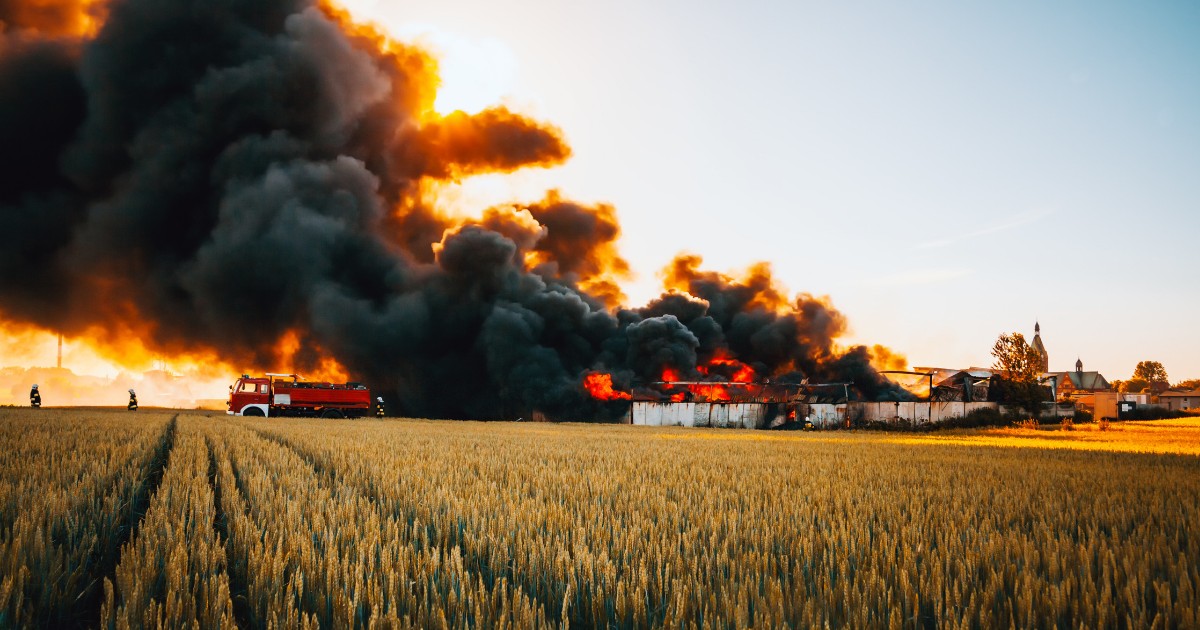



Article by: Hari Yellina
Following a series of bushfires, a regional electricity network in Western Australia is replacing overhead lines with off-grid solar and battery solutions, or microgrids, in fire-prone areas. Four emergency-level fires ravaged remote Western Australia on the first weekend of February, damaging homes, cattle, and sensitive native bushland. Two of the flames started on powerlines above the ground. Michael Lange’s piggery in Wickepin, 220 kilometres south-east of Perth, was consumed in flames in less than three minutes, killing thousands of pigs in their pens. The Wickepin fire, which destroyed two homes and 18,000 hectares of farms and native bushland, was caused by clashing power cables, according to the Department of Fire and Emergency Services.
Mr Lange stated, “It was an electrical fault that could have been avoided completely.” Western Power has replaced nearly 50 kilometres of burned lines with independent solar, generator, and battery systems, speeding up the company’s long-term goal of reducing regional WA’s dependency on overhead lines. “Over the next four years, we expect to deploy roughly 1,000 [standalone power systems], with the goal of increasing to 4,000 over a ten-year timeframe,” said acting asset operations executive Zane Christmas. Mr Christmas admitted that the Wickepin fire was caused by Western Power’s powerlines, but said that the company’s regional lines were well-maintained, with more than $200 million in bushfire mitigation work completed each year.
On the weekend of the four fire crises, much of southern Washington was slammed by heavy winds and high temperatures, and ten districts were issued “catastrophic” fire warnings, which a DFES representative described as “extremely rare.” Mr Christmas recognises that overhead powerlines are vulnerable under such conditions, even if they are properly maintained. “Extreme weather, for example, can cause the conductors to droop slightly, with this as a result. It’s a combination of variables, to be sure” he stated. The vastness of Australia’s overhead line networks makes the areas particularly vulnerable to powerline fires, according to Dr Elizabeth Ratnam, a future engineering research fellow at ANU and former systems planning engineer at Ausgrid.
Embracing new technology to establish microgrids, according to Dr. Ratnam, is one of the best methods to lessen this risk and avert fires. Western Power has committed to doing just that with its standalone solar, generator, and battery systems. The Australian Energy Market Commission revised its rules in February to allow standalone power systems to be placed in the National Electricity Market, which connects all states and territories except Western Australia and the Northern Territory. “Because the power infrastructure that links communities to the grid can also trigger bushfires, freestanding power systems are appealing alternatives to regular network connections in certain places.”
Volunteers from all across WA and the interstate have gathered to assist repair crucial infrastructure in the two months following the fire. Mr Lange was inundated with offers of assistance from local volunteers who rebuilt the charred pig enclosures after three days without sleep. “It would have taken six or eight months if we had done it ourselves.” A team of BlazeAid volunteers has set up camp in the adjacent town of Narrogin, with the intention of spending three or four months full-time fixing farm fences. In addition to the pigs that were burned, the Wickepin fire killed an estimated 2,200 sheep, according to the WA Department of Primary Industries and Regional Development. Hundreds of kilometres of fencing are required to replenish the thousands of sheep that have been displaced from the farms.